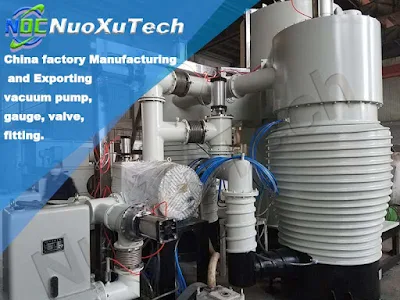Applications of Vacuum Technology in the Coating Industry
Vacuum coating technology has become an essential branch of vacuum applications, playing a pivotal role in industries like optics, electronics, energy development, packaging, and surface science. The primary methods used in vacuum coating include vacuum evaporation, sputtering, ion plating, beam deposition, and molecular beam epitaxy. Chemical vapor deposition (CVD) is another widely adopted technique.
Key Vacuum Coating Methods
Vacuum coating techniques are aimed at modifying the physical or chemical properties of a material's surface, which categorizes them under vacuum surface treatment technologies. Some of the most commonly used methods include:
- Vacuum Evaporation: The material to be coated is vaporized and deposited on a substrate.
- Sputtering: Atoms are ejected from a solid target material due to bombardment by energetic particles and then deposited as a thin film.
- Ion Plating: A method that combines evaporation with bombardment of the substrate by ions.
- Molecular Beam Epitaxy: Used for high-precision coating at the atomic level, particularly in semiconductors.
Applications of Vacuum Coating
1. Optics:
In optics, vacuum coating can be used to enhance or reduce reflectivity by depositing thin films on optical glass or quartz. This enables the creation of anti-reflection coatings, high-reflectivity mirrors, and filters that allow selective wavelengths of light to pass through. These coatings are essential in the production of lenses for cameras, telescopes, and advanced laser systems.
2. Electronics:
Vacuum coating is indispensable in the electronics industry. It is used to create conductive films, insulating layers, and protective coatings in various circuits, including memory devices and logic components. Chromium films are commonly used as masks during circuit fabrication, while magnetic films are applied in devices like hard drives.
3. Displays:
In display technologies, vacuum coating is used to manufacture components like transparent conductive films for flat-panel displays, photo-conductive films for camera tubes, and aluminum backing for cathode ray tubes. High-density recording media like video heads and tapes also rely on vacuum-deposited films.
4. Components Manufacturing:
Vacuum evaporation methods are used to produce electrical components such as resistors, capacitors, and selenium drums for photocopiers. Additionally, it can be used to create superconductive films and coatings for applications such as fusion reactors.
5. Decorative Coating:
Vacuum coating is also employed in producing decorative finishes on items like jewelry, watches, textiles, and even architectural elements. Recent trends include the production of titanium-coated products such as stainless steel sheets, mirror panels, and luxury furniture.
Conclusion:
Vacuum coating technology offers a versatile and effective way to alter the surface characteristics of materials. Its wide range of applications, from optics to electronics and decorative purposes, makes it an indispensable tool in modern industries.
Contact us
For more information about Applications of Vacuum Technology in the Coating Industry, contact Nuoxutech at contact@nuoxutech.com or visit our website www.nuoxutech.com .You can also reach us on WhatsApp at +86 13849062209.Our team is ready to provide you with professional service and support.
Keywords: vacuum coating, PVD, CVD, sputtering, ion plating, thin film deposition, optical coatings, electronics, decorative coatings

Comments
Post a Comment